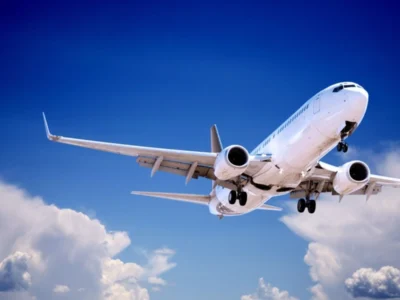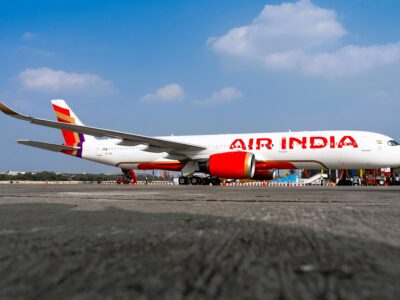
IATA says that in 2022, the industry losses are expected to reduce to USD 9.7 billion for a net loss margin of 1.2 pc (IO Photos)
As the pace of recovery from the crisis of Covid-19 accelerates this year, the International Air Transport Association (IATA) upgrades its financial outlook for the airline industry.
IATA says that in 2022, the industry losses are expected to reduce to USD 9.7 billion for a net loss margin of 1.2 pc. This is a huge improvement from losses of USD 137.7 billion (-36.0 pc net margin) in 2020 and USD 42.1 billion (-8.3 pc net margin) in 2021.
It seems industry-wide profitability next year will be within reach as North America is already expected to deliver a profit of USD 8.8 billion this year.
Strong pent-up demand, the lifting of travel restrictions in most markets, low unemployment in most countries, and expanded personal savings have fuelled a resurgence in demand that will see passenger numbers reach 83 pc of pre-pandemic levels this year.
Not just the passenger volumes, but even cargo business is expected to perform well this year, says IATA, adding that despite economic challenges, cargo volumes are expected to set a record high of 68.4 million tonnes.
“Airlines are resilient. People are flying in ever greater numbers. And cargo is performing well against a backdrop of growing economic uncertainty. Losses will be cut to USD 9.7 billion this year and profitability is on the horizon for 2023. It is a time for optimism, even if there are still challenges on costs, particularly fuel, and some lingering restrictions in a few key markets,” says Willie Walsh, IATA’s Director General.
With the easing of Covid-19 restrictions and people returning back to travel, revenues are also seen increasing alongside simultaneously. This has now led to the challenge of keeping costs under control.
“The reduction in losses is the result of hard work to keep costs under control as the industry ramps up. The improvement in the financial outlook comes from holding costs to a 44 pc increase while revenues increased 55 pc. As the industry returns to more normal levels of production and with high fuel costs likely to stay for a while, profitability will depend on continued cost control. And that encompasses the value chain. Our suppliers, including airports and air navigation service providers, need to be as focused on controlling costs as their customers to support the industry’s recovery,” Walsh adds.
Revenues move close to 2019
Industry revenues are expected to reach USD 782 billion, 93.3 pc of 2019 levels. Flights operated in 2022 are expected to total 33.8 million, which is 86.9 pc of 2019’s level.
Passenger revenues are expected to account for USD 498 billion of industry revenues, more than double the USD 239 billion generated last year. The number of scheduled passengers are expected to reach 3.8 billion, with revenue passenger kilometres (RPKs) growing 97.6 pc over 2021, reaching 82.4 pc of 2019 traffic.
Cargo revenues are expected to account for USD 191 billion of industry revenues. This is slightly down from the USD 204 billion recorded in 2021, but nearly double the USD 100 billion achieved in 2019. Overall, the industry is expected to carry over 68 million tonnes of cargo this year, which is a record high.
Overall expenses are expected to rise to USD 796 billion. This is a 44 pc increase on 2021, reflecting both the costs of supporting larger operations and the cost of inflation in some key items.
High fuel and labour costs
While revenues are climbing back to 2019 levels fairly rapidly, the airline industry’s recovery is hampered by spike in two key components that drive aviation, fuel and labour.
At USD 192 billion, fuel is the industry’s largest cost item in 2022. This is based on an expected average price for Brent crude of USD 101.2/barrel and USD 125.5 for jet kerosene. Airlines are expected to consume 321 billion litres of fuel this year compared with the 359 billion litres consumed in 2019.
The war in Ukraine is keeping prices for Brent crude oil high, says IATA. Nonetheless, fuel will account for about a quarter of costs in 2022. High fuel prices are likely to see airlines improve their fuel efficiency, both through the use of more efficient aircraft and through operational decisions.
The second highest operational cost item for airlines is labour. Direct employment in the sector is expected to reach 2.7 million, up 4.3 pc from last year as the industry rebuilds from the significant decline in activity in 2020. Employment is still, however, somewhat below the 2.93 million jobs in 2019 and is expected to remain below this level for some time. Unit labour costs are expected to be 12.2 cents/available tonne kilometre (ATK) in 2022, which is essentially back to 2019 levels when it was 12.3 cents/ATK.
In countries where the economic recovery from the pandemic has been swift and the unemployment rate is low, tight labour markets and skill shortages are likely to contribute to upward pressure on wages. The industry’s wage bill is expected to reach USD 173 billion in 2022, up 7.9 pc on 2021, and disproportionate to the 4.3 pc increase in total jobs, predicts IATA.




















